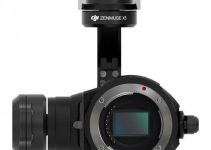It happens now and then that you need to use a photo inside your video. It could be just a wedding video or a live event, sometimes it happens in documentaries too. But a flat image that may slowly crawl from one side to the other of the screen is quite boring, so what can we do about that?
This is where Jordi from Cinecom.net is coming to help, with this tutorial for After Effects. Now don’t get scared because After Effects is involved. It’s a huge and sometimes scary software, but many functions and effects are much easier than you’d expect. If you take your time to learn the interface and maybe catch up with some tutorials, you’ll get going with some crazy effects and animations sooner than you can imagine.
This time we’re specifically going to create depth inside a 2D image, trying to fake a third dimension that, obviously, was not there, to begin with. But that’s easier said than done: let’s take a look!
The trick here is to study the image and create a depth map. What does that mean? Literally mapping the image, since it’s actually a 2D plane while trying to separate the items that are closer to the viewer from those that are further back in the distance. There’s a couple of ways we can do that, a manual one, and an automatic one. Let’s start with the first method.
#1 Manual mapping
Start by importing your photo inside a new composition, and without having it selected, you can create a new white shape layer, using the pen tool, that will cover the whole image. After that, you need to separate the image into multiple monochrome areas.
The idea is to create a shape around each part of the subject changing a tad the color shade of the shape you draw. Begin with a very light gray going to black for the nearest parts. Take your time and map all the different areas roughly in shape but accurately depth-wise.
The final result will be precomposed and softened with some gaussian blur. At that point, you may turn the visibility off, and the layer shall become the map for a displacement effect you ‘re going to place on the photo layer. Easy peasy, right? By adjusting the settings inside the displacement, you can effectively animate a fake depth in the 2D image.
#2 Automatic mapping
We bet you already know where we’re going. Yes, it’s an artificial intelligence technique that is going to save time. There’s a couple of requirements, like installing Google AI and a Phyton console, but the main component is the StereoPhoto Maker App.
This software has the option to make use of the Google AI engine to analyze the photo and produce a surprisingly accurate depth map of the picture you feed to it. There’s no need to say that the depth analysis created by the AI would be far superior to that you’d create by hand.
Once you’ve got your depth map the process is straightforward and it’s identical to the former method. This time you can probably skip the gaussian blur part. And there you go, that was an incredibly simple and effective trick to animate that boring and dull photos you’ve got to put in your editing.
[source: Cinecom.net]
Disclaimer: As an Amazon Associate partner and participant in B&H and Adorama Affiliate programmes, we earn a small comission from each purchase made through the affiliate links listed above at no additional cost to you.
Claim your copy of DAVINCI RESOLVE - SIMPLIFIED COURSE. Get Instant Access!




